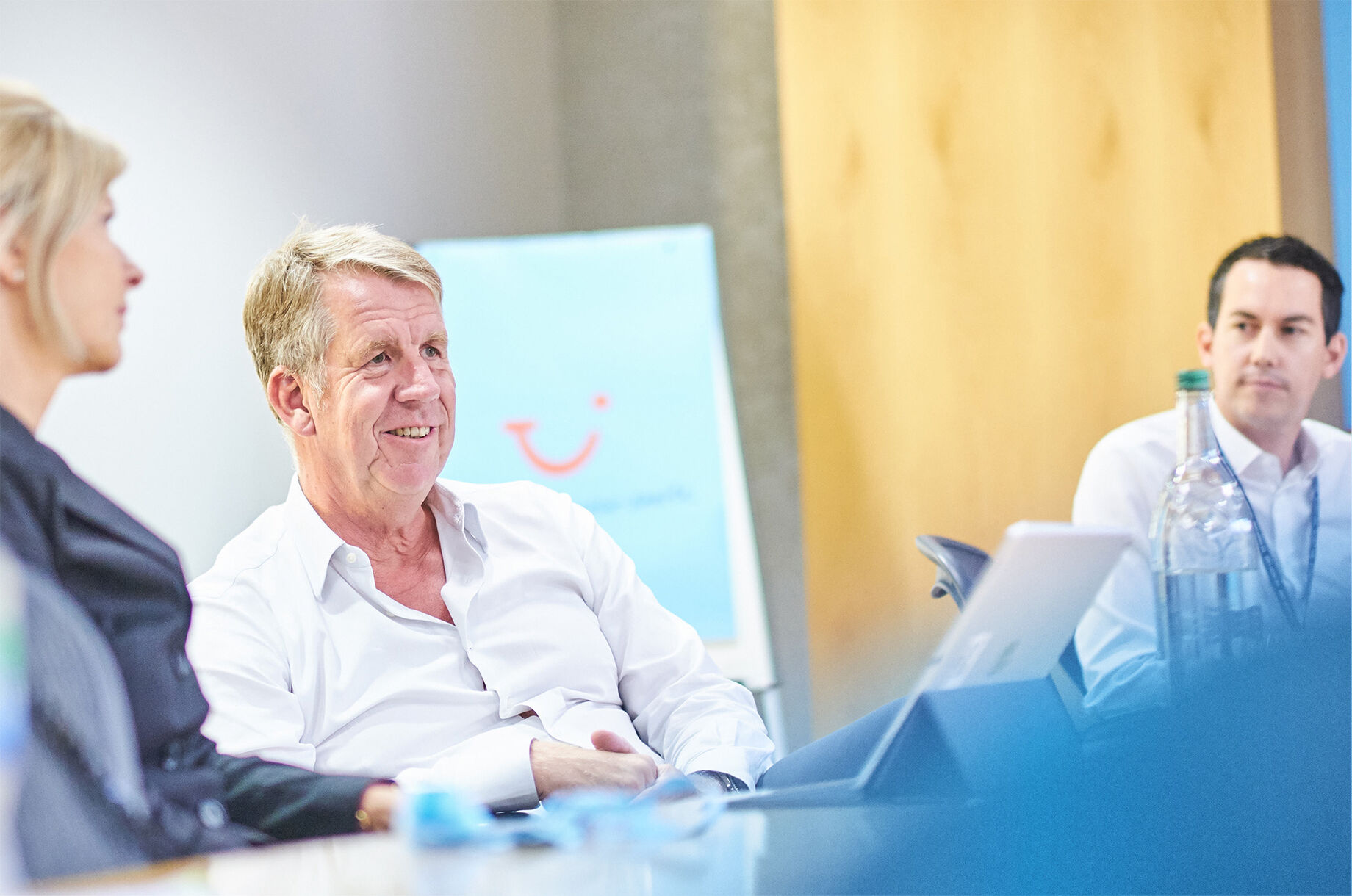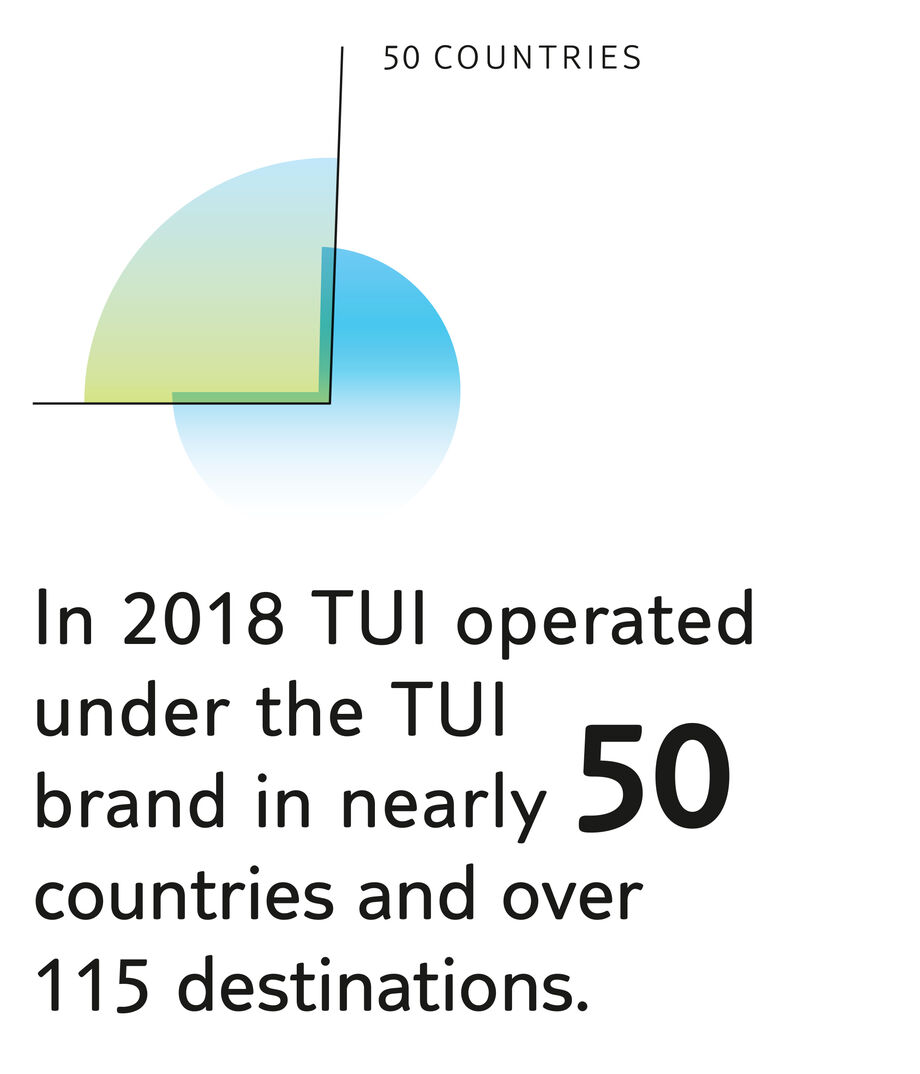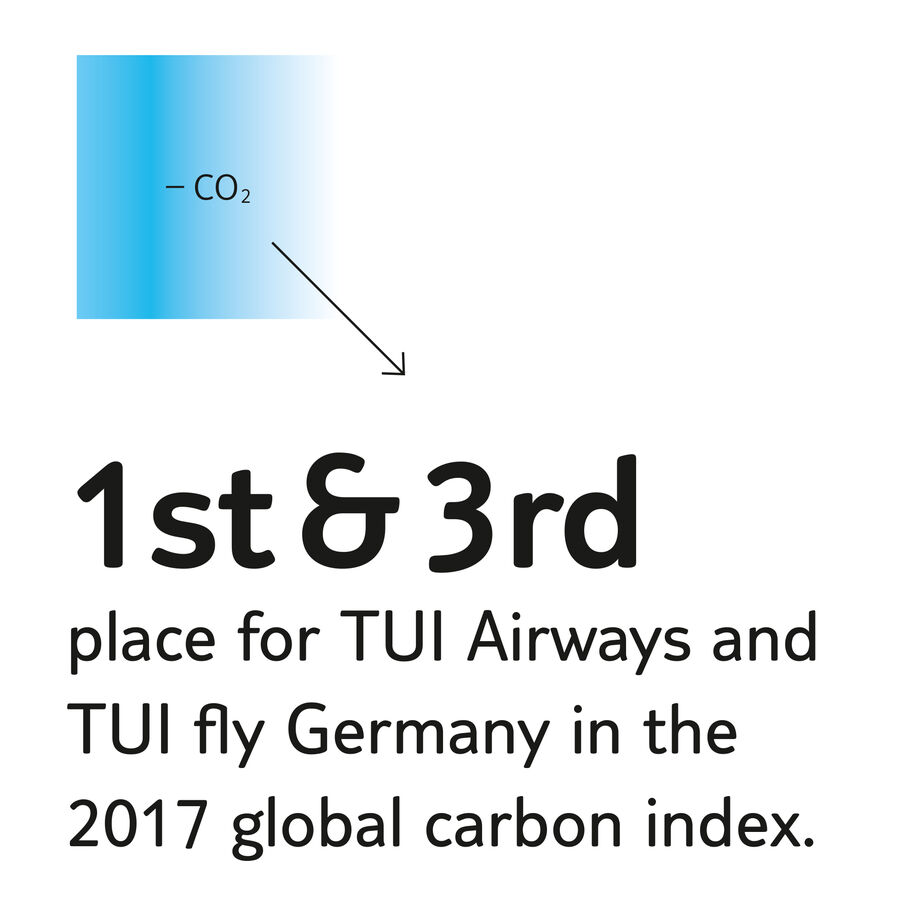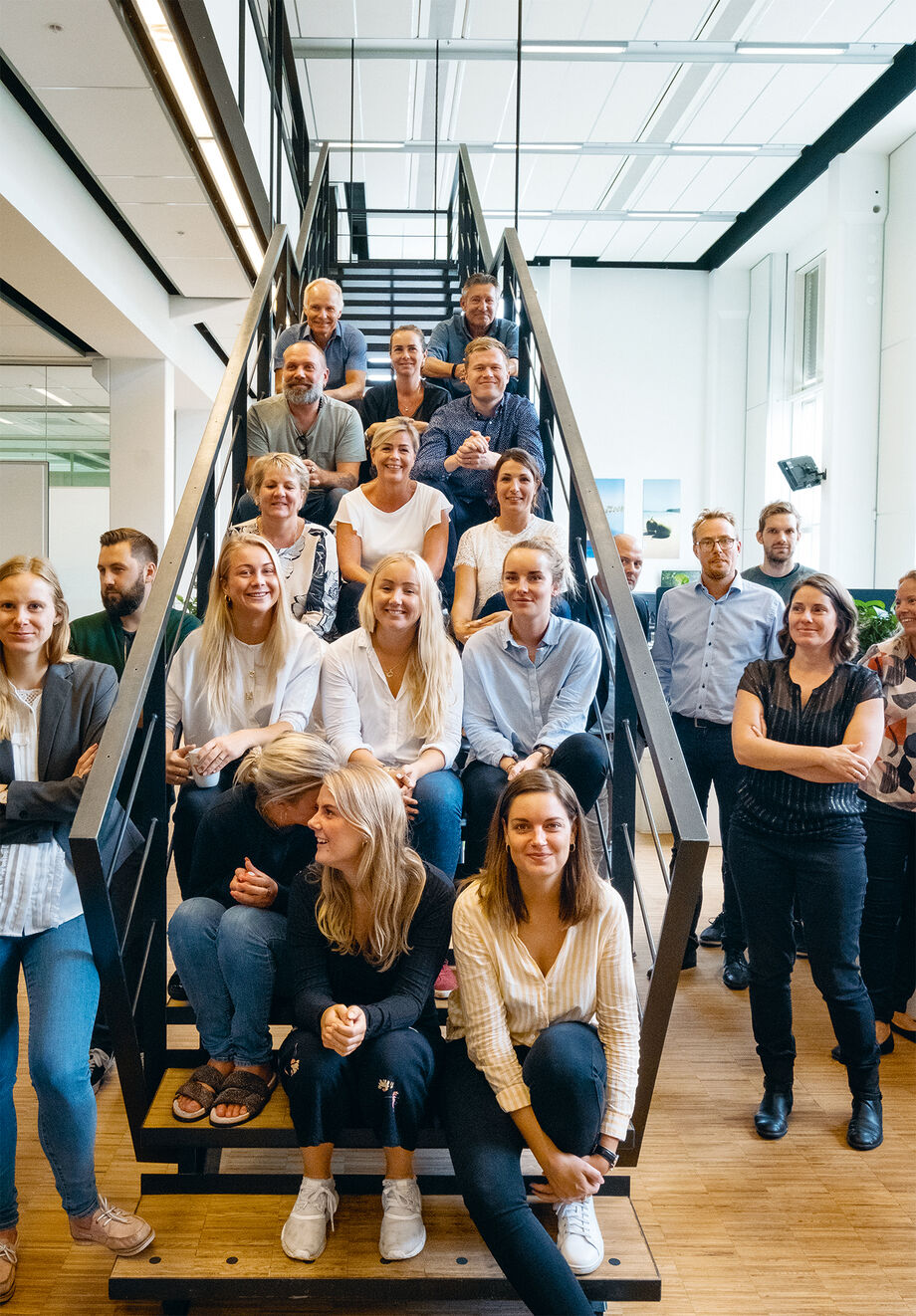TUI is built on very stable pillars and plans to grow right along the value chain. A strategy chat with TUI CEO Fritz Joussen on moments of truth for the tourism Goup. The trend towards greater personalisation and associated investments. The opportunities and potential in ancillaries. And the growth potential from TUI’s customers.
Mr Joussen, what was your special TUI moment last year?
I had so many special moments – with customers, business partners and our own employees. Opening new hotels, launching the new cruise liner Mein Schiff 1. On Fuerteventura, the first ever club in our Robinson brand has been beautifully restored since December; in the UK, the shift to the TUI brand has been a resounding success; and in Scandinavia, we are proving that today’s TUI is digital through and through. In Germany, after an initiative taken by the Group Works Council, we have rolled out newWork@TUI. We have acquired two more companies for our destinations business, including the Italian digital start-up Musement. Those were all highlights in 2018. And in economic terms too, 2018 was a very good business year. For the fourth year in a row we grew our earnings by a two-digit figure, i. e. more than 10 per cent. We all have a share in that achievement. Around 70,000 employees made it happen. They are our brand ambassadors. For our customers, they are the face of the company. I want to thank them for that.
Early in the year the prospects looked even better. Were there surprises in store?
First and foremost, we delivered what we promised. Earnings growth of more than ten per cent is not something many companies achieve as sustainably as TUI has now done for several years in a row – despite the challenging environment. 2018 was not an easy year. The performance of sterling after the Brexit referendum was a tangible factor, especially for British consumers and holiday makers. In addition, it was an extremely hot summer in northern and central Europe. Lots of people spontaneously opted for a staycation. But our robust result demonstrates that our Group and our business are well positioned.
One important factor was the change in strategy – away from a straight tour operator towards an integrated tourism Group with a focus on hotels and cruises. Where does TUI stand today?
We are still reaping the rewards of that decision in 2013 to shift from being a simple tour operator and holiday broker towards becoming our own developer, investor and operator. Our business is far more evenly spread across the year, our dependence on the summer quarter has declined, and we are earning higher margins with our hotels and cruises. We have by and large completed that transition from tour operator to integrated tourism Group. Now about 70 per cent of revenues are earned in the segments Hotels and Cruises and from our activities and services in the destinations.
What now?
The change continues. In summer we streamlined our Group organisation. With one clear objective: to be faster, more efficient and more dynamic. We are on our way to becoming a digital company. We want half our earnings growth to come from digitalisation in future. And I’m not talking about online distribution here. Obviously we’ve been doing that for a long time already. In some markets we sell almost exclusively online, while in others travel agencies and personal advice are still very much in demand. We are always as digital as our customers in that market want us to be. I mean that we have been digitalising our business processes. First of all around the services and products we offer our customers: if I know my customer, I can tailor the product to suit whatever that person likes to do. So we are developing services that are relevant to our guests, to make their holiday nicer and easier – and to increase our own turnover as a result. Customers are happy to pay for good services. Secondly, digitalisation is advancing on the supply side. We increasingly manage our worldwide hotel capacities centrally through blockchain. That ensures a high level of transparency in all our markets, optimum management of occupancy rates and greater profitability.
27 million customers, terms like “package holiday” and “all-inclusive” – none of that sounds very personalised. How do these things fit together?
It all fits together very nicely. Maybe that term “package holiday” is old-fashioned. But the offering that underlies it is totally up-to-date. Our customers want a very individual holiday experience, a special moment that stays engraved in the memory. And they value a wide choice of options, quality, service and personal attention in their destination. It begins when they are planning the trip and continues with the flight and the hotel. The activities and services available at the destination are increasingly important to them.
How do you manage that with 27 million guests?
It’s precisely because we have 27 million guests a year that we can offer those special services at the destination – something for everyone at affordable prices. The key lies in only offering customers the things that match their tastes. Nobody knows the travel habits and holiday preferences of our customers better than we do. TUI is sitting on a treasure chest with a huge amount of knowledge, and in recent years we have learnt to process that data and put it to good use for our customers. When a customer books a holiday with TUI, there are usually a few months between booking and departure. We want to make better use of that window to offer customers products and services tailored to their preferences before they set off. We want to target those offers individually, because our customers are individuals. As we all know, nobody likes being pestered by spam. We aim to be so good that one suggestion in five triggers a purchase.
How will you obtain that accurate understanding of what customers want?
There are three dimensions to that: looking at the historical data, analysing the patterns of other customers, and forecasting the future. What are our customers’ habits, what preferences have they already expressed for destinations, hotels, rooms, excursions and activities, when will they be travelling? What do other customers of a similar age or background like to do? We are a service company and we know our customers well – not least because TUI has so many loyal regulars. Here too, digitalisation helps. We will be drawing on cutting-edge IT, artificial intelligence and algorithms. Our investments in people and technology have paid off, so in digital terms we are very well set up already. We have quite consciously invested in recruitment too, establishing completely new job profiles at TUI and bringing managers and experts from global technology companies into the Group.
You mentioned an increasing focus on individuals. But where do those personalised offers come from?
Our Spanish subsidiary TUI Destination Experiences has been playing a key role in this. It’s no accident that we recently renamed the business. These days our colleagues are not simply providing destination services. They are creating experiences, activities, moments that make the holiday special. We have been investing again and we now have visibility as TUI in almost 50 countries. But that is not enough in itself. That’s why we recently bought the start-up Musement. The Italian tech company operates a platform that can bring destination activities and users together. We will be expanding that platform substantially so that we can offer our customers as many products and activities as possible. I see very big potential there.

Can you give us an example?
It might sound a bit obvious, but a young family with small children is probably more interested in a day trip to a theme park than in visiting a museum. And a group of young adults are perhaps more likely to take a tour in the hills on mountain bikes.
Why do you think this is so important?
If we want to continue our success story, we must respond to our customers’ personal preferences. Ancillaries are a highly profitable business. But you have to go about it the right way. In the classical tour operator business, margins are expressed in low, single-digit figures. In hotels and cruises we earn much more for every euro spent – that’s why we are investing heavily in that area. With the ancillaries, those margins are equally attractive.
How come?
Take that much-loved seat on the plane right next to the emergency exit. You can give it to the first person who asks for it during check-in. Or you can offer that seat in advance to someone who prefers it. Today a hotel guest can usually choose between a room overlooking the sea or the garden. But every room is different. Near the lift, well away from the lift, a corner room, close to the pool or the kids’ club or else as far away as possible. Those are all options that we don’t offer with our products yet. If we go about it the right way, the scale-up from ancillaries could be huge. I’m thinking primarily of the potential we have with our 21 million customers in the European source markets. We can achieve further growth – while at the same time enhancing the personal holiday experience.
Will tourism carry on being so successful?
There are no indications that it won’t. In the last 15 years tourism has consistently grown faster than GDP – except for the year after the financial crisis, in 2009. Of course, growth comes hand in hand with greater responsibility, and as market leaders we are committed to that. The effects of tourism are mostly positive. It generates income, education, infrastructure, medical care and so forth.

But growth doesn’t only have positive effects …
And so we take great care to grow responsibly. We know that sustainability plays an outstanding role. Our airlines in the UK and Germany rank first and third in the global carbon efficiency index. We already have one of the most state-of-the-art cruise fleets in the world and the new Mein Schiff vessels ordered for 2024 and 2026 will run on liquefied petroleum gas. Besides, the TUI Care Foundation launched by TUI makes a major contribution by ensuring that as many people as possible in the destinations can benefit sustainably from tourism – for example, through education programmes or support for local start-ups or conservation campaigns. The basic principle is that wherever tourism evolves, social and environmental standards improve. The infrastructure, for instance, becomes cleaner and greener. Wherever tourists go bathing there is more awareness about healthy beaches and an unspoilt environment. Farmers adopt organic methods and supply regional hotels and restaurants. All that strengthens the local economy in these countries and creates jobs.
Finally, what trends are you seeing, where is TUI growing?
Cruising is and remains a growth market. Apart from the new acquisitions at TUI Cruises and Marella Cruises, the fleet at Hapag-Lloyd Cruises will expand in 2019 by adding two luxury expedition vessels. Caribbean holidays are gaining traction. The hotels there are running to 95 per cent of capacity. This is reflected in our investments in the area. And last but not least, we are growing at global level. We want to translate our success in the Caribbean over to Asia, taking our offering to China, Malaysia, India and Brazil and expanding our customer base there. We want the hotels we operate under our Group brand in Sri Lanka, Vietnam, the Maldives and Thailand to set the benchmark for holiday hospitality in Asian markets. The new Robinson Club Khao Lak, for example, became an insider tip in no time. As long as people still want to travel – and all the signs suggest that is not about to change – we are operating in an attractive market and we will continue to play an active role in defining it. You might say that we are creating unique moments for our customers millions of times over.
Thank you for your time, Mr Joussen.
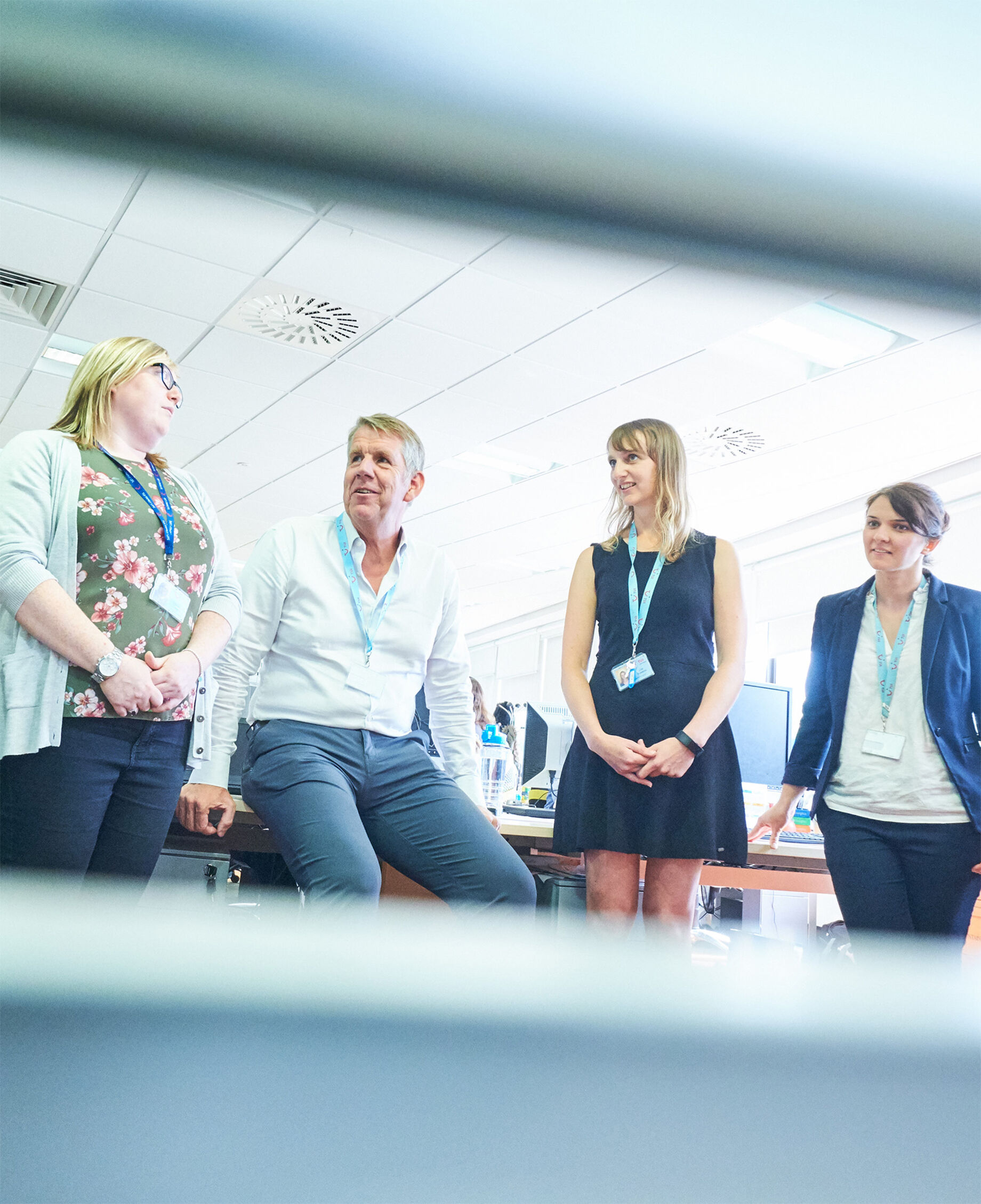




 Austria
Austria

